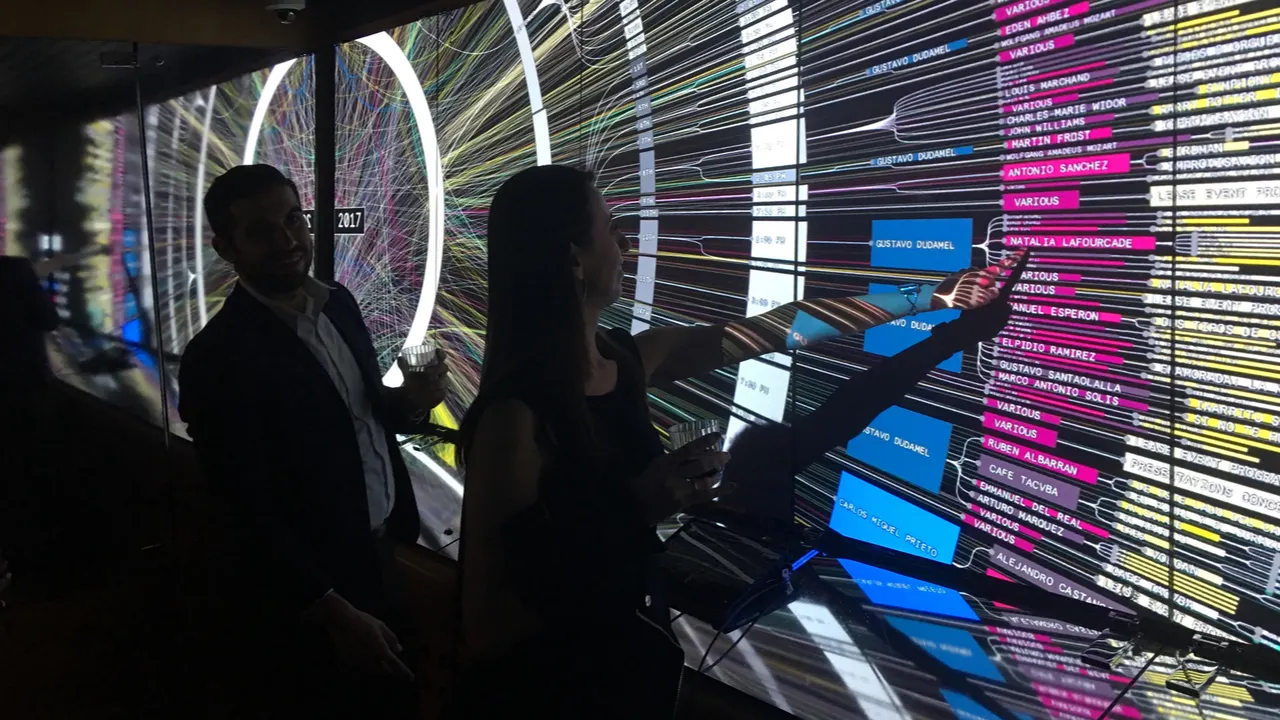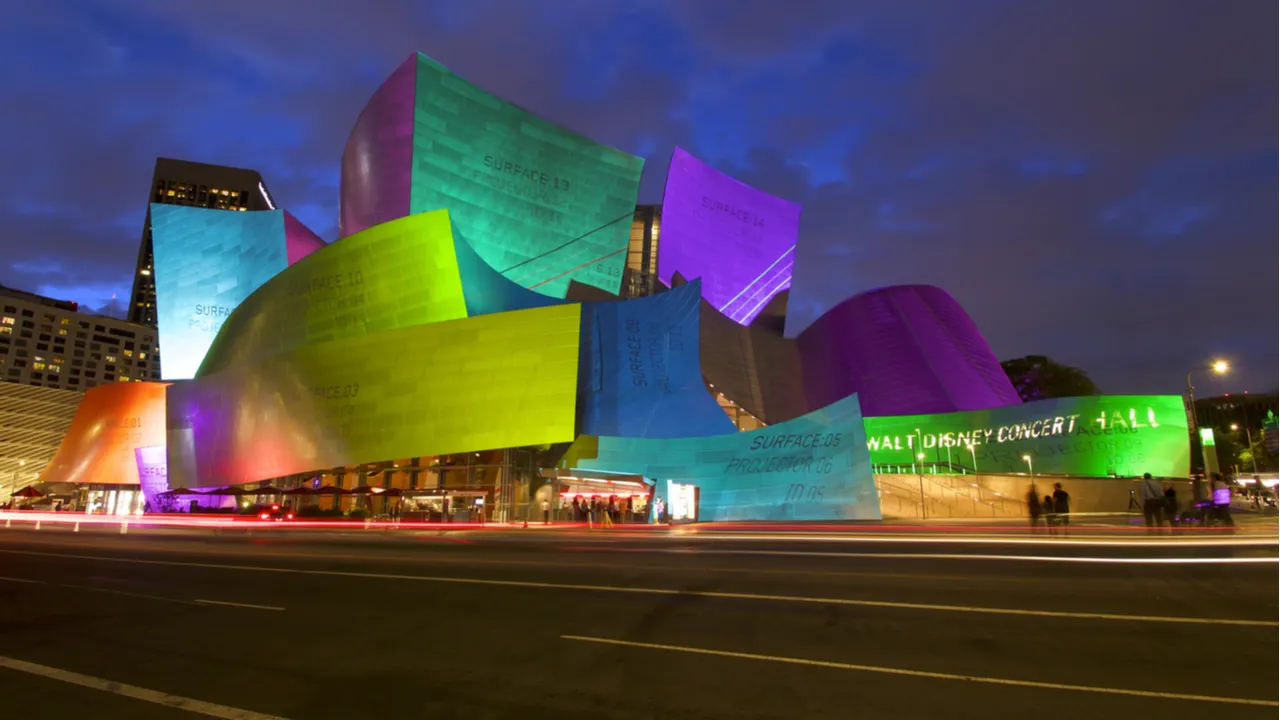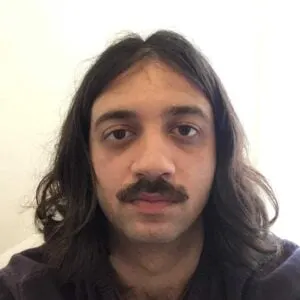In brief
- Refik Anadol uses artificial intelligence to create intricate and immersive environments.
- His work explores the intersection between architecture, graphic design and computer science.
- In an interview with Decrypt he announced his decision to make all of his future projects available as NFTs
Los Angeles-based artist, TED fellow and former Google artist-in-residence Refik Anadol is currently one of the hottest names in AI art. By the end of 2021 he’ll be one of the biggest names in NFT art, too.
He has made buildings dream and turned a 1,700,000 document archive into a galactic constellation of data points called ‘Archive Dreaming.’ In a piece called ‘Melting Memories,’ inspired by his uncle’s battle with Alzheimer’s, he turned brain scans of people’s memories into beautiful and almost tangible textures.
Now Anadol, 36 and with 321k Instagram followers, is neck-deep into crypto art, the most intangible sci-fi invention of our time. Like Rick & Morty creator Justin Roiland and recently deceased rapper MF DOOM, he has started minting Non Fungible Tokens—Ethereum-based digital artworks that take advantage of the blockchain’s virtually ineradicable ledger to prove their own digital scarcity.
Anadol’s NFT collection on crypto art marketplace Nifty Gateway sold for an easy $30,000. The drop was called ‘Machine Hallucinations,’ and it was a set of five augmented reality, data-driven sculptures done in a style that nods to Renaissance sculptures, albeit ones that have undergone some hallucinatory warping after being churned through an artificial subconscious.
Since auctions concluded on December 1, 2020, the value of the data paintings has shot up. Sculpture D now sells for $30,000, thirty times its original price, while sculpture B is retailing again for a staggering hundredfold increase of $100,000, and sculpture A may generate a 150x return for one of its original buyers.
Now convinced of their worth, Anadol vows to mint an NFT—a crypto collectible—for every piece of art he sculpts, paints or codes, he told Decrypt. “From now on, since I trust the crypto art world, everything I do in the physical world will always have a corresponding piece in the crypto world. I thought that in this interview I wanted to declare this,” he said over Zoom.
Between minting digital tokens and making public displays of a building’s subconscious, Anadol still thinks of himself as a painter, and a cursory glance at his compositions will tell you that he’s earned that right. Anadol employs huge data sets as palettes, and the algorithms he selects to process them are his brushes. The results are protean and intricate. Each painting is a real-time demonstration of machine thinking, perfect for NFTs, a land where code is law.
Who is Refik Anadol?
Originally from Istanbul, Anadol moved to Los Angeles to pursue an MFA in Design Media Arts at UCLA. On his first day in America, he drove to the Walt Disney Concert Hall and walked around the outside, admiring its hulking convexities and concavities.
The trip planted the seed of what would, by 2018, become one of the city’s most impressive public art displays. By projecting archive footage from the Los Angeles Philharmonic onto the strange modern facades of the concert hall, Anadol created the sight of a building reliving its own memories.
“In the 21st century, light is a material,” Anadol tells Decrypt over Zoom. “Physically biased materials are not exciting anymore. They’re limited. We’re going beyond the materials we’ve had in our hands for centuries.”
Anadol’s work is the apotheosis of anti-material digital culture. His medium is light. Oceans of it. But coming up through the museum and gallery world, he quickly realized he had to push the envelope of what was possible himself: “My ideas don’t often fit in normal places,” he laughs.
“Sometimes I ask for eighteen projectors or a 10x10 meter screen. Whenever I worked with institutions, I push them to the edge of their capacity. I always hear ‘oof impossible!’ or ‘we can’t do that!’ but it’s just a reflexive response.”
Anadol takes these responses as encouragement: “That’s when you know you’re doing something fresh, beyond the norm. Digital culture is ready for pushing ideas. It’s young, aggressive, ready for questions, ready for critics and ready for growth. There’s an energy you can feel.”
Refik has his own studio workshop, too. Though it contains none of the easels, mannequins and nude life drawing models that clutter most studios. Instead, it’s a cutting-edge fourteen-person computer studio. In 2014, Refik founded ‘Refik Anadol Studio’, a collaboration of data scientists, architects, designers and researchers from ten countries, who work with code to merge architecture, graphic design and AI into psychedelic cyberpunk data paintings that have been exhibited in dozens of cities, including Berlin, New York, Miami, Florence, Paris and Istanbul.
When asked if machine-generated art poses a risk to the artist’s voice Refik goes on the defensive: “I don't think so. There's extreme purpose in every single step. If I work with data, I'm aware of which data I'm using and which algorithms are sorting that data. There’s a lot of control here. It’s not randomness. It's a true man/machine collaboration.”
Anadol controls the software, selects the data and lets the machine generate its own path between each frame in the data set he has selected to employ. In his 2019 installation ‘Machine Hallucination,’ (no relation to the Nifty drop), his algorithms continually morph the landscape’s features between thousands of pictures of New York’s skyline.
In 2020, Anadol exhibited “Quantum Memories” in Australia’s largest art gallery, the National Gallery of Victoria. It was the product of a year working with Google’s AI Quantum research team, employing quantum computing software on a dataset of more than two million nature-related images taken from the internet.
"That took almost a year. A year of quantum mechanics, quantum computation, quantum algorithms, merging AI with quantum mechanics and generating from a 200 million image corpus of nature. These are heavy works, and sometimes they’re much heavier, in practice, than making a painting. There's a brain push here that is different to traditional art-making.”
Putting it on blockchain
When asked exactly what it is about blockchain that makes it so appealing for artists, Anadol enthuses: “You know exactly what’s going on, you're aware of your audience. You’re aware of your collector. It’s beautiful open communication. The second is of course the volume. The community is growing and supporting each other.”
Blockchain is defining a new ethics around artworks, taking their creation, sale and ownership to new heights of transparency. The works sold are often on the bleeding edge of visual art.
“My role in the game is to merge the physical and virtual worlds in my work, and to do the same thing in the NFT world,” says Refik. “Now when I make a 3D or 2D print in the physical world, it’s logged on blockchain and you can see the date of creation, the timestamp of the upload, and the moment of ownership. Everything is clear and open and I love this. It's a beautiful experience for anyone who loves openness.”
Refik will bring NFT tech to his next big project: an appearance at the 2021 Venice Biennale, which has been postponed till next year. The Refik Anadol Studio will use data from the Human Connectome Project as its palette. The project hopes to map the insanely finicky neuronal wiring of the human brain, (with over 100 billion neurons it’s the most complicated object in the known universe), from high-res scans of about 1,100 healthy adults. Refik’s studio will analyze what happens when we think, and if the thinking process can be turned into architecture.
The questions Refik will be trying to answer at Biennale are, he says: “can we live in our own thoughts? Can we touch our memories? Can we measure our emotions? And the good news? Yes!” he beams.
Anadol brings a lot of hard-earned credibility from art institutions into the NFT market. Whether machine-generated art takes off or not, his work has proven that, even in an age of unprecedented and incredible automation, there is no substitute for the true artist’s voice. It rings loud and clear through the whirring of machines as they think, dream and create.
Daily Debrief Newsletter
Start every day with the top news stories right now, plus original features, a podcast, videos and more.



